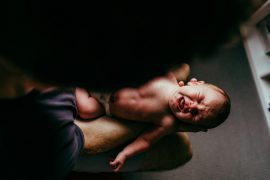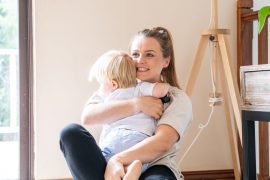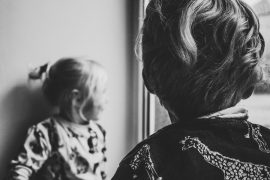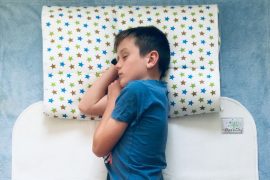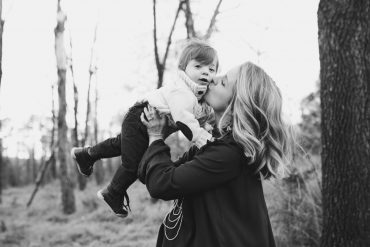It’s also important to turn your clock around, don’t look at your phone at night and stop using sleep tracking apps. Knowing how often you and your baby wake just leads to more stress and less sleep.
Some parents swear by expensive physiological trackers like the Owlet, but these gadgets are meant for babies sleeping alone, which itself is a risk factor for SIDS. In fact, the American Academy of Pediatrics says not to use these monitors as a SIDS reduction strategy.
The authors of an article in the Journal of the American Medical Association note that healthy babies can have temporary drops in oxygen levels and 80% of these are harmless. Research has shown that when these drops happen, the breathing and movements of an adult sleeping nearby help rouse babies from deep sleep so they breathe normally again.
Is my baby getting enough sleep?
The latest source of worry for new parents are recent articles claiming that children need a certain amount of sleep for normal brain development. But remember that these give the average amount needed – and to be an average, some must sleep more and some must sleep less!
Contrary to popular belief, sleep training doesn’t necessarily result in more or better sleep. Babies and toddlers still wake at night – they just learn not to protest, since no one will respond.
And the stress of biologically ABNORMAL separation is likely to do more harm to a child’s brain development than any supposed lack of sleep.
Many kids do just fine with a late bedtime. The authors of Sweet Sleep recommend “front loading” – getting things done early in the day (leave the dinner dishes for morning!) so the family can relax on their floor bed in the evening.
Turn the lights low, read or listen to podcasts, let baby or toddler play and nurse until they are ready to fall asleep. If they wake up in the middle of the night ready to party, play dead until they nod off again. Sweet Sleep also has great ideas on how to “nudge” a baby to sleep longer when they are ready.
Occasionally, very frequent night waking can be caused by ear infections, allergies or other medical concerns.
Sleep coaches, programs and schools have become big money makers recently in several Western countries. Most are based on cultural (rather than biological) norms of separate infant sleep and encourage sleep training.
Many sleep “problems” go away when parents adjust their expectations and sleep environment to be more biologically normal. Books like Sweet Sleep, Good Nights, Sleeping With Your Baby, Sleeping Like a Baby and The No-Cry Sleep Solution can help (see below for details).
What about older babies and toddlers?
As babies grow into young children, most still need the comfort of a parent’s presence at night.
Night time is scary! Families often play musical beds, with one parent lying down with an older child in one room while the other nurses a toddler in another.
Some parents find night nursing challenging as babies turn into toddlers. Night weaning is usually not without tears, but talking to your child about it gently for several weeks beforehand can help. So can a wonderful children’s book called Nursies When the Sun Shines. It’s important to keep any night weaning technique gentle and to try again later if your toddler doesn’t seem ready.
Every family finds their own way – older children may come into the parent’s bed in the middle of the night or one parent may go back into their room or siblings may share a bed. Many parents have found that children leave (or stop coming into) the family bed in their own time, be that 2, 12 or anything in between. Rest assured that no college student has ever needed to be nursed to sleep in their dorm room!
Sleeping with your baby is biologically normal. Humans have done it for thousands of years. It’s what babies – and parents – need at night. With a few precautions, Western parents can enjoy this species-specific experience – and get plenty of rest too.
***
Bonafide, C. et al, “The Emerging Market of Smartphone-Integrated Infant Physiologic Monitors,” JAMA, January 24/31, 2017
BASIS – Baby Sleep Info Source
Brief Toddler and Infant Sleep Screening (BTISS)
Good Nights by Dr. Jay Gordon
Dr. James McKenna’s Mother-Baby Sleep Lab at the University of Notre Dame
Dr. Jay Gordon – Changing Sleep Patterns in the Family Bed
Nursies When the Sun Shines: A little book on nightweaning by Katherine Havener and Sara Burrier
Sleeping With Your Baby: A Parent’s Guide to Co-sleeping by Dr. James McKenna
Sleeping Like a Baby: Simple Sleep Solutions for Infants and Toddlers by Pinky McKay
Sweet Sleep: Nighttime and Naptime Strategies for the Breastfeeding Family by Diane
Weissinger, Diana West, Linda J. Smith and Teresa Pitman
The Gentle Sleep Book by Sara Hockwell-Smith
The No-Cry Sleep Solution by Elizabeth Pantley
Originally published here.
Mary Francell is a board certified lactation consultant (IBCLC) in private practice in Washington state, USA. She and her husband are the parents of three grown children. Mary founded and administers the Biologically Normal Infant Sleep group on Facebook and is an occasional guest host on the Untaming podcast. She has been a La Leche League Leader for over 25 years and currently serves as the Associate Area Professional Liaison for LLL of Washington state. Find out more on her website whatdobabiesneed.com and follow her on Facebook.




